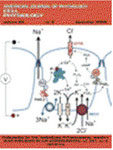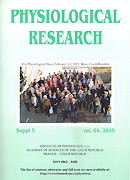NIH FIRCA RO3 TW005543/1
Calcium signaling in cardiac excitation-contraction
Principal Investigator: Sandor Gyorke, Texas Tech University, Lubbock, TX, USA
|
Annotation:Excitation-contraction coupling (ECC) in mammalian cardiac muscle relies on calcium signaling across the tubulo – reticular junction. It comprises a series of molecular events including: voltage-dependent activation of the plasmalemmal L-type Ca2+ channels (DHPRs); diffusion and binding of injected Ca2+ ions within the tubulo-reticular gap; Ca2+-dependent activation of a juxtaposed cisternal ryanodine receptor calcium release channel (RyR); release of Ca2+ ions to the tubulo-reticular gap; amplification of the release by Ca2+-dependent activation of the adjacent RyR channels, and inhibition of the calcium current by Ca2+-dependent inactivation of the DHPR channels. All these events, stochastic in nature, are not sufficiently understood. Especially, it is not clear how they are orchestrated to provide efficient excitation-contraction coupling and gradation of the release with the stimulus. Our central hypothesis is that the specific microarchitecture of the tubulo-reticular junction, consisting of juxtaposed clusters of DHPR and RyR channels, together with their specific calcium-dependent gating properties, convey the unique properties of ECC in cardiac myocytes. We particularize this hypothesis in the concept of the excitation-contraction coupling unit (ECCU). The ECCU is understood as the whole set of channels in the cardiac dyadic junction, defined by their conductive and gating properties and by their topological disposition and ionic environment. The DHPR channels form an excitation unit – the subset of ECCU, which gives rise to calcium currents in response to voltage stimulus. The RyR channels form a release unit – the subset of the ECCU, which gives rise to elementary calcium transients (calcium sparks/spikes). |
Keywords:ryanodine receptor, cardiac myocyte, excitation-contraction coupling |
Objectives:The objective of this proposal is to define the key steps in control of calcium release by excitation at the level of calcium signaling between individual channels forming the dyadic ECC unit and to determine their physiological significance. To achieve this objective, we will extensively employ the original model of calcium current kinetics with release dependent inactivation, and the new software for simulation of the electrophysiological experiment based on simulation of interacting channel clusters, both developed at the Slovak site. We will concentrate on three closely related specific aims. Specific Aim 1: To define the mechanisms of calcium signaling within the ECCU during activation of calcium release. The goal of these experiments is to derive the disposition of the ECCU and to determine which feed-forward calcium signaling steps within the ECCU are essential for the efficiency and reliability of calcium-induced calcium release (CICR). Specific Aim 2: To determine the mechanism of DHPR inactivation by the released Ca2+ ions and to define its physiological significance. The goal of these experiments is to determine which feedback calcium signaling mechanisms within the ECCU are essential for the efficiency and stability of CICR. Specific Aim 3: To define the key steps controlling the gain and efficiency of the ECCU with implications on the gradation of E-C coupling at the whole-cell level. We hypothesize that the voltage- and time-dependence of the Ca2+ transient at the whole-cell level, and thus contraction, results from the summation of stochastically distributed responses of individual ECCUs to the stimulus. |
Publications: |
 |
Zahradnik I, Gyorke S, Zahradnikova A (2005). Calcium activation of ryanodine receptor channels–reconciling RyR gating models with tetrameric channel structure. J Gen Physiol. 126: 515-527. |
 |
Zahradnikova A, Kubalova Z, Pavelkova J, Gyorke S, Zahradnik I (2004). Activation of calcium release assessed by calcium release-induced inactivation of calcium current in rat cardiac myocytes. Am J Physiol Cell Physiol. 286: C330-41. |
 |
Dura M, Zahradnik I, Zahradnikova A (2003): Kinetics of cardiac RyR channel gating studied at high temporal resolution. Physiol Res. 52: 571-578. |
 |
Zahradnikova A, Dura M, Gyorke I, Escobar AL, Zahradnik I, Gyorke S (2003). Regulation of dynamic behavior of cardiac ryanodine receptor by Mg2+ under simulated physiological conditions. Am J Physiol Cell Physiol. 285: C1059-1070. |

 contact
contact
